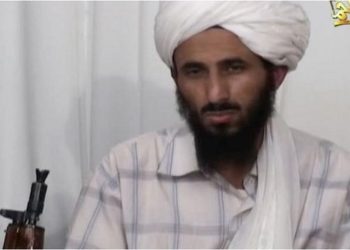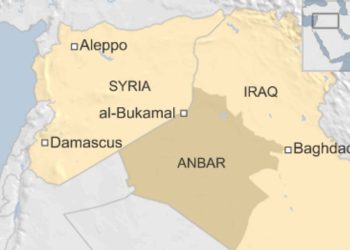BACKGROUND: The “Domino Effect” was a key Russian concern over Chechen calls for independence, or separation as dubbed by Russia, since the collapse of the Soviet Union and the ensuing beginning of the Russo-Chechen war in 1994. Russia’s concern was that the Chechen model would be replicated all over the North Caucasus, causing Russia lose one of the strategic areas under its control. However, this did not happen. The areas in the North Caucasus near Chechnya remained peaceful and did not get involved in the conflict, as had been the case in the first Caucasian wars in the nineteenth century. But the Nalchik attacks comes in a different context, the circumstances created in the aftermath of the Russian forces’ announcement of having assassinating Chechnya’s legitimate and moderate president, Aslan Maskhadov, on March 9 of this year. His assassination was a significant addition to Russia’s series of mistakes in the North Caucasus. Maskhadov was a key player in the genuine peace-building efforts between Chechnya and Russia that aimed at putting an end to conflict. He was also the major factor in hindering the scope of the operations of the fundamentalist arm of the resistance movement from expanding outside Chechnya. In spite of questions regarding the legitimacy of his leadership, his influence on both sides of the Chechen resistance, fundamentalist and moderate, became clear when he announced a ceasefire before his assassination that was followed by all forces. Since Maskhadov’s assassination, resistance operations have increased and spread, whether in Chechnya or other nearby North Caucasian areas, particularly Ingushetia and Dagestan. The Circassian-dominated northwestern Caucasus (Karachay-Cherkessia, Adygeia, and Kabardino-Balkaria) suffered increasing tension as hardliners throughout the region started to fill the void that Maskhadov’s assassination had left. The Chechen mark is seen in many of the operations taking place in the North Caucasus, such as those led by the “Islamic Military Council” in Dagestan. Most members of this group are former fighters in Chechnya, and their commanders are still there. The group’s commander, Rabbani Khalikov, is close to the Chechen field commander, Shamil Basayev, and had previously pledged allegiance to Maskhadov. Khalikov’s group’s operations have increased in Dagestan since the assassination of Maskhadov.
IMPLICATIONS: In a quantitative analysis of military operations in the North Caucasus (including Chechnya) undertaken by this author in the aftermath of Maskhadov’s assassination (March 9 – October 13, 2005) it is evident that the situation in Dagestan has come to rival that in Chechnya. 42 out of 102 operations (i.e. 41 per cent) were in Dagestan, whereas 51 per cent were in Chechnya. This indicates that there is mounting tension outside Chechnya – as the hardliners had promised. On average, there were over 12 operations a month, meaning roughly six in Chechnya, 5 in Dagestan, and one in Ingushetia. An analysis of the “objectives” of these operations indicates that apart from the Chechen factor, are internal factors are at work as well, intensifying armed resistance and contributing to its diffusion and spread. The share of attacks on Russian army units was almost 40 per cent; corresponding figures for local police and Interior Ministry forces was 33 per cent, for local ministers and government officials 10 per cent, and the remaining 17.6 per cent was distributed among different targets, such as trains and infrastructure facilities. This increase in local targets indicates that Chechnya is not the sole factor impacting the mounting violence in the North Caucasus. There are other local and internal factors at play in the region. For instance, 55% of the operations in Daghestan took place in the capital, Makhachkala, and not in Khasavyurt, which is on the border with Chechnya and where a large number of Chechens live. The North Caucasus is witnessing increasing frustration and disillusionment with local elite that are deeply associated with corruption. In addition, there is a increasingly negative view of the center, Moscow. This dissatisfaction has especially increased since Russian President Vladimir Putin announced that regional rulers will be appointed, not elected. Moreover, unemployment and poverty rates in some North Caucasian Republics have skyrocketed to ca. 80%, with the average income for the regular person half the average of Russians in general. As a matter of fact, Putin’s envoy to the region, Dimitri Kozak, warned about this in a report in which he focused on socioeconomic problems in the region and overlooked the issue of human rights. Put together, these factors have created increasing numbers of radicalized and disillusioned Islamist youth, whether in Dagestan, Ingushetia or the Northwestern Republics. Frustration is widespread, with surveys showing a significant proportion of respondents expect little or no change to take place. Surveys have also recorded high levels of discontentment and disillusionment with the ruling elite. Most importantly, there are increasing numbers of people ready to go into a confrontation with the local governments in republics that have been generally peaceful ever since the collapse of the Soviet Union. In a recent survey, 21 per cent of respondents in Karachay-Cherkessia said they were prepared to confront the government and 14 per cent answered “possibly”. In Kabardino-Balkaria, 15 per cent answered “yes”, and 8 per cent “possibly”, testifying to the mounting frustration in the North Caucasus.
CONCLUSIONS: Although the Nalchik raid was clearly the largest operation outside Chechnya since Maskhadov’s assassination, it is not the only one. On the contrary, it took place in the general context created by the Russian strategy and policy. It would also seem that the connection between frustration and increasing religious and nationalist trends pushes for a replica of the nineteenth-century Caucasian war. This is exemplified, for instance, by tensions in the Adygeia Republic between people of Russian (65%) and Circassian ethnicity over erecting a statue for the Christian Saint St. Nicholas, the miracle worker. It has been noted that protesters were using words from the Russian occupation and Caucasian resistance period in the nineteenth century. It is also evident by the decision by rebel armed forces to rename the Dagestan capital, Makhachkala, to Shamilkala after Imam Shamil, the nineteenth-century legendary leader of the joint Chechen-Dagestani resistance and a symbolic figure in Caucasian history. This indicated that North Caucasians are restoring historic trends including religious or regionalist ideologies contrary to the state of affairs that followed the downfall of the Soviet Union and the increasing nativization trends that undermined calls for unity. It is therefore clear that through its policies, Russia has created a burgeoning crisis for itself in the North Caucasus, and that a North Caucasian radical Islamic movement could turn the Russian South into a tense area that can contribute to restructuring Eurasia’s geopolitical map – unless Russia realizes that its mistake began, remains, and has to be addressed in Chechnya, but in a different way than it has done so far.
Source: Central Asian Caucasus analyst











